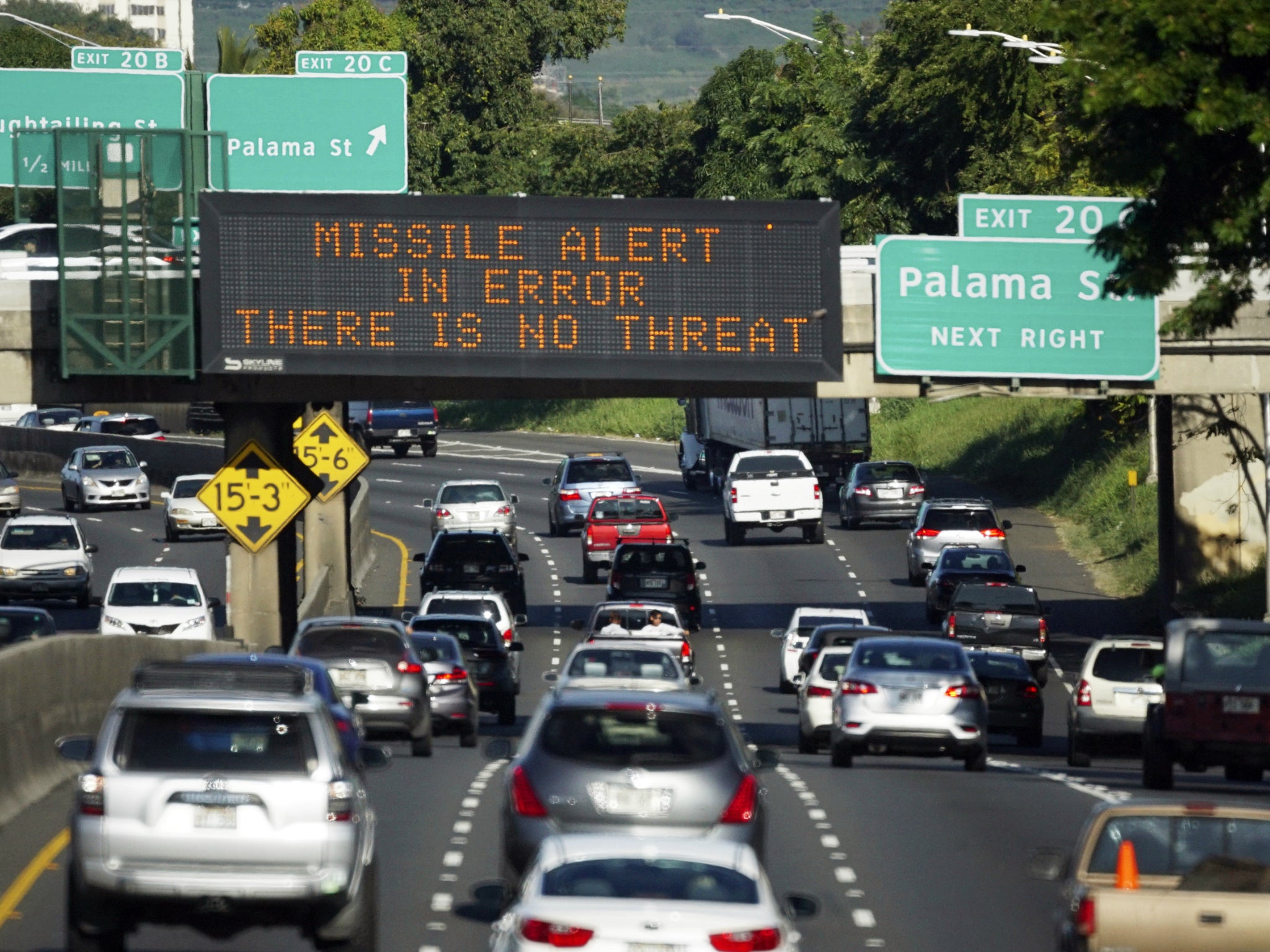Hawaii worker who sent false alert thought it was real missile attack
It was originally thought to be a mistake

Your support helps us to tell the story
From reproductive rights to climate change to Big Tech, The Independent is on the ground when the story is developing. Whether it's investigating the financials of Elon Musk's pro-Trump PAC or producing our latest documentary, 'The A Word', which shines a light on the American women fighting for reproductive rights, we know how important it is to parse out the facts from the messaging.
At such a critical moment in US history, we need reporters on the ground. Your donation allows us to keep sending journalists to speak to both sides of the story.
The Independent is trusted by Americans across the entire political spectrum. And unlike many other quality news outlets, we choose not to lock Americans out of our reporting and analysis with paywalls. We believe quality journalism should be available to everyone, paid for by those who can afford it.
Your support makes all the difference.The state worker who sent the false alert of a missile attack on Hawaii actually thought it was a real threat, the Federal Communications Commission (FCC) said.
It was originally thought the 13 January text alert to mobiles all over the islands was sent in error.
The warning-system officer was fired and a mid-level manager at the Hawaii Emergency Management Agency (HEMA) has been suspended.
Two civilian officials of HEMA - Agency Administrator Vern Miyagi and Executive Officer Toby Clairmont - have also resigned as a result of the false alert debacle.
The FCC, the federal agency which regulates the nation's airwaves and sets standards for such emergency alerts, said in its report that the state emergency agency worker believed the attack was real because of a mistake in how the drill was initiated during a shift change.
The worker, who has not been identified, said he did not hear the word "exercise" repeated six times even though others clearly heard it.
He heard a recorded message that began by saying "exercise, exercise, exercise" — the script for a drill, the FCC report detailed.
Then the recording used language that is typically used for a real threat, not a drill: "this is not a drill." The recording ended by saying "exercise, exercise, exercise."
The state has been preparing for a nuclear missile attack from North Korea since last year when tensions between President Donald Trump and leader Kim Jong-un escalated.
The state had begun testing a siren warning system, a wailing sound, in November - something that had not been employed since the Cold War.
Hawaii does not have any public fallout shelters at this time, just one of the flaws highlighted by the false alarm
The report revealed a flaw in the procedure for sending an alert as well.
There was no need for this worker to double-check with a colleague or get a supervisor's approval before sending the blast to mobiles, TV and radio stations statewide, the FCC said.
"There were no procedures in place to prevent a single person from mistakenly sending a missile alert" in Hawaii, said James Wiley, a cybersecurity and communications reliability staffer at the FCC.
The Hawaii state report revealed that the worker had confused real events with practice drills in the past as well.
His poor performance had been documented for years and other members of the team said they were not comfortable working with him in any role, but he was not removed from the position and it appeared he had not had any responsibilities taken away.
In the chaos of the initial alert being sent, he had been directed to send a message cancelling the threat, according to the state’s internal investigation. However, he "just sat there and didn't respond” and "seemed confused."
Another employee took over the computer to send out a correction, but not before panicked Hawaiians spent 38 minutes in fear.
To add insult to injury, Hawaii’s Governor David Ige took 17 minutes to tweet out a correction to the false alert because he had forgotten his Twitter password.
Other state officials had sent out corrections within a few minutes of being notified by state authorities.
The FCC report also criticised Hawaii’s lack of cancellation procedures in the event a false message was sent.
Adding to all the confusion, the Washington Post reported the menu the worker used to send the false alert contained all manner of public warnings, from Amber alerts about missing children to tsunami warnings and road closures.
While some of the options are obvious and laid out in layman terms, “others, including the one for a missile attack, “PACOM (CDW)-STATE ONLY,” use shorthand initials."
PACOM is the United States Pacific Command, the military command based in Hawaii.
“And the menu contained no ballistic missile defence false alarm option — which has now been added,” the newspaper reported.
HEMA has already taken steps to try to avoid a repeat of the false alert, requiring more supervision of drills and alert and test-alert transmissions.
Agencies contributed to this report.
Join our commenting forum
Join thought-provoking conversations, follow other Independent readers and see their replies
Comments